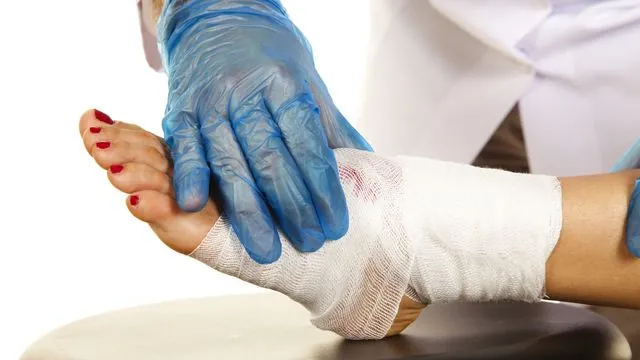
Revolutionary Hydrogel Dressings: The Future of Diabetic Wound Healing
2025-01-02
Author: Rajesh
Diabetes affects more than 420 million individuals across the globe, with diabetic foot ulcers being one of the most serious complications. Alarmingly, a lower extremity amputation occurs every 20 seconds worldwide. These wounds present unique challenges, including impaired blood flow and ongoing inflammation which significantly hamper the healing process.
The market for treatments for diabetic foot ulcers reached an impressive USD 8.2 billion in 2022, projected to hit USD 14.4 billion by 2032. Traditional wound care solutions often consist of passive dressings that only shield injuries from external elements without encouraging healing. However, groundbreaking hydrogel technologies are emerging as potent solutions to enhance diabetic wound recovery.
What Exactly are Hydrogels?
Hydrogels are three-dimensional polymer networks with an impressive capacity to absorb water and maintain their structure. Their remarkable characteristics—such as biodegradability and biocompatibility—make them ideal for myriad biomedical applications.
Innovative Hydrogel with Antibacterial and Antioxidant Properties
Recent research introduced a synthetic hydrogel known as PPN, composed of crosslinked polyethylene glycol (PEG) infused with an antibacterial polymer and an antioxidant (N-acetylcysteine or NAC). This innovative hydrogel was shown to inhibit the growth of various harmful bacteria, making it particularly beneficial for diabetic wounds prone to infection.
In laboratory tests, the PPN hydrogel could absorb up to ten times its weight in water while remaining acidic even after a week in infected conditions, demonstrating its durability. Remarkably, when applied to diabetic mouse models, it exhibited over 99.9% reduction in bacterial colonization, significantly outperforming conventional treatments.
Additionally, the hydrogel's antioxidant properties stimulated the production of vascular endothelial growth factors (VEGF), essential for new blood vessel formation and tissue regeneration.
Exosomes in Hydrogel Dressings: A Game-Changer
Hydrogels can also be enhanced by incorporating exosomes derived from adipose stem cells (ADSCs), known for their regenerative capabilities. Research published in Nature Communications showcased a novel hydrogel infused with ADSC-derived exosomes and oxygen nanobubbles designed to elevate oxygen levels in wound environments. This dual-action approach not only improved oxygen delivery but also promoted the regeneration of new tissues, paving the way for faster healing.
Lab experiments using this hydrogel demonstrated enhancements in cell proliferation and migration, leading to more effective wound healing, even displaying minimal scarring in animal models.
Mechanical Stimulation: Boosting Healing with Hydrogels
Another innovative approach involves mechanotherapy, where hydrogels are utilized in conjunction with dynamic pressure treatments. Recent advancements include a magnetic hydrogel that stimulates cell growth through external magnetic fields. This method has resulted in a remarkable increase in cell growth and improved healing rates, demonstrating a 200% enhancement in recovery speed in diabetic models. The application of mechanical stimulation proved particularly effective in activating fibroblasts, crucial cells for wound closure.
Conclusion: The Next Frontier in Wound Care
Conventional wound dressings often serve a limited purpose. However, multifunctional hydrogels present groundbreaking opportunities that could drastically improve diabetic wound healing. By harnessing the synergistic effects of antibacterial properties, antioxidants, and mechanical stimuli, these advanced dressing technologies can expedite recovery, minimize healthcare costs, and most importantly, enhance the quality of life for millions suffering from diabetes-related complications. Stay tuned as the world of wound care continues to innovate! 🩺✨



 Brasil (PT)
Brasil (PT)
 Canada (EN)
Canada (EN)
 Chile (ES)
Chile (ES)
 Česko (CS)
Česko (CS)
 대한민국 (KO)
대한민국 (KO)
 España (ES)
España (ES)
 France (FR)
France (FR)
 Hong Kong (EN)
Hong Kong (EN)
 Italia (IT)
Italia (IT)
 日本 (JA)
日本 (JA)
 Magyarország (HU)
Magyarország (HU)
 Norge (NO)
Norge (NO)
 Polska (PL)
Polska (PL)
 Schweiz (DE)
Schweiz (DE)
 Singapore (EN)
Singapore (EN)
 Sverige (SV)
Sverige (SV)
 Suomi (FI)
Suomi (FI)
 Türkiye (TR)
Türkiye (TR)
 الإمارات العربية المتحدة (AR)
الإمارات العربية المتحدة (AR)